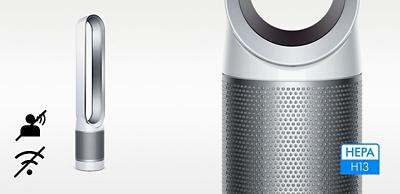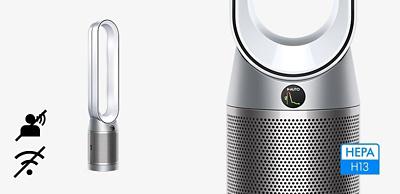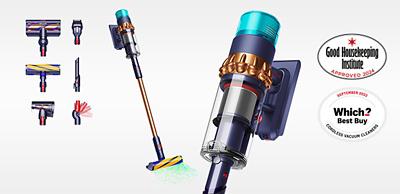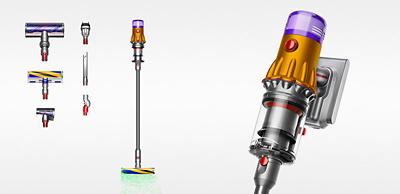Guide | July 21, 2023
How to cope with pollen allergy as a family
Pollen allergies, also known as hay fever or allergic rhinitis, can be disruptive for individuals and families alike. Up to 25% of children are affected by pollen allergies¹ and symptoms can disrupt their daily activities and reduce their overall quality of life.
The good news is there are some simple things you can do to make your child – and any other hay fever sufferer in the home – feel better. We explore valuable tips and strategies for coping with pollen allergies as a family.
Understand the basics of pollen allergies
Before delving into coping strategies, it’s crucial to understand the basics of pollen allergies. Pollen allergies are triggered by the immune system’s reaction to pollen particles from various plants, such as trees, grasses, and weeds. Symptoms include sneezing, congestion, runny nose, itchy eyes, and fatigue. By knowing the specific triggers and symptoms, families can take targeted steps to minimise exposure and alleviate discomfort.
For more information on pollen allergy symptoms in children, read our article Pollen allergies in children: recognising the signs and symptoms.
Create an allergy-smart home environment
- Keep windows and doors closed during peak pollen seasons and use air conditioning or air purifiers with cooling instead.
- Regularly clean and vacuum your home to remove pollen particles that may have entered.
- To trap pollen, consider using air purifiers with high-efficiency particulate air (HEPA) filters in bedrooms and living areas.
- Encourage family members to remove their shoes at the door to prevent pollen from spreading indoors.
Monitor pollen counts
Staying informed about pollen counts in your area is an effective strategy for planning outdoor activities. Several websites and smartphone apps provide up-to-date pollen count information. When the pollen count is high, limit outdoor activities or plan them during times when pollen levels are lower, such as after rainfall.
Create a ‘pollen-free’ zone
Designating a ‘pollen-free’ zone in your home can help create a sanctuary for family members with allergies. Pollen in bedrooms can be minimised by following these steps:
- Use allergy-proof bedding covers to prevent dust mites and pollen from collecting on mattresses and pillows.
- Use blinds or shades instead of curtains, as they are less likely to trap pollen.
- Implement a no-pets policy in the designated room to avoid pet dander, which can exacerbate allergies.
Wash away allergens and dress appropriately
Encourage your children to practice good personal hygiene and make sure their clothing protects them from pollen allergens.
- Shower before bedtime to remove pollen that may have been collected on the body and hair during the day.
- Encourage wearing sunglasses and a hat while outdoors to protect your child’s eyes and face from pollen.
- Wash clothes regularly, especially after spending time outdoors, to remove any lingering pollen.
Consult an allergist
If pollen allergies affect the quality of life for any family member, it’s advisable to seek professional help. An allergist can provide accurate diagnosis, prescribe appropriate medications, and offer personalised advice based on individual needs.
Living with pollen allergies as a family may present challenges, but by using these coping strategies, you can help minimise the impact on daily life.
Shop the solution
Dyson Purifier Cool TP7A Autoreact Purifying Fan (White/Nickel)
524
Dyson Purifier Cool TP7A Autoreact Purifying Fan (White/Nickel)
5
Star
301
4
Star
79
3
Star
50
2
Star
38
1
Star
56
Purifies the whole room¹ and cools you. HEPA 13 filter captures 99.95% of pollutants as small as 0.1 microns².
Control with remote. Not app compatible.
H 1050mm x L 220mm x W 204mm
2 accessories included
See all Hide2 accessories included
See all Hide-
Remote Control
Remote Control Curved and magnetised to store neatly on the machine, control with remote. Not app compatible.

-
360° Glass HEPA and Activated Carbon Filter


Dyson Pure Cool™ TP00 Purifying fan (White/Nickel)
392
Dyson Pure Cool™ TP00 Purifying fan (White/Nickel)
5
Star
235
4
Star
75
3
Star
37
2
Star
22
1
Star
23
Purifying fan. 360º Glass HEPA filter captures 99.95% of pollutants as small as 0.1 microns⁵
Control with remote. Not app compatible.
H 1010mm x L 110mm x W 190mm
2 accessories included
See all Hide2 accessories included
See all Hide-
Remote Control
Curved and magnetized to store neatly on the machine

-
Filter

Dyson HEPA Purifier Cool TP09 Formaldehyde Purifying Fan (White/Gold)
709
Dyson HEPA Purifier Cool TP09 Formaldehyde Purifying Fan (White/Gold)
5
Star
456
4
Star
102
3
Star
43
2
Star
37
1
Star
71
HEPA H13 purifier and fan. Ideal for larger spaces.
Detects and destroys formaldehyde. Automatically senses and displays real-time air quality
Control using the Dyson Link app and compatible voice services. Security software updates supported until 31/12/31.
What's included
See all HideWhat's included
See all Hide-
Remote control*
Curved and magnetised to store neatly on the machine

-
360° Glass HEPA and Activated Carbon Filter

Dyson Gen5detect™ (Prussian Blue/ Rich Copper)
6897
Dyson Gen5detect™ (Prussian Blue/ Rich Copper)
5
Star
4615
4
Star
1143
3
Star
439
2
Star
182
1
Star
518
The most powerful HEPA cordless vacuum¹ with De-tangling technology and HEPA filtration².
Includes the new Fluffy Opticᵀᴹ cleaner head and a built-in dusting and crevice tool.
Up to 70 minutes of run time⁵.
2 cleaner heads and 6 accessories
See all Hide2 cleaner heads and 6 accessories
See all Hide-
Fluffy Optic™ cleaner head
A precisely angled blade of light reveals twice the amount of invisible dust on hard floors.

-
Digital Motorbar™ cleaner head
56 de-tangling vanes automatically clear wrapped hair from the brush bar as you clean.

-
Built-in dusting and crevice tool
Wand detaches with a click to reveal a ready-to-go crevice tool stored inside for on-the-spot cleans.

-
Combination tool
Two tools in one – wide nozzle and brush, for quick switching between cleaning and dusting tasks around your home or car.

-
Low reach adaptor
Bends to comfortably reach down low. Engineered to clean further under low furniture by adjusting the wand angle up to 90°.

-
Hair screw tool
Anti-tangle brush bar removes hair from pet beds, car seats and stairs. Fast.

-
Charger
Charges your vacuum with or without the Wall Dock.

-
Wall dok™
Wall-mounted dock to recharge your vacuum and tidily store tools.

Dyson V12 Detect Slim Absolute
7151
Dyson V12 Detect Slim Absolute
5
Star
5491
4
Star
1075
3
Star
273
2
Star
129
1
Star
183
Our most powerful, lightweight cordless vacuum with De-tangling technology and single-button power control.
Includes the new Fluffy Opticᵀᴹ cleaner head.
Up to 60 minutes run time.
2 cleaner heads and 8 accessories
See all Hide2 cleaner heads and 8 accessories
See all Hide-
Fluffy Optic™ cleaner head
A precisely angled blade of light reveals twice the amount of invisible dust on hard floors.

-
Motorbar™ cleaner head
Motorised, edge-to-edge deep cleaning with de-tangling technology.

-
Low Reach Adaptor
Bends to comfortably reach down low. Engineered to clean further under low furniture by adjusting the wand angle up to 90°

-
Hair Screw Tool Retail

-
Combination tool
Two tools in one - brush and wide nozzle. For simple switching between tasks.

-
Crevice tool
Designed for precise cleaning around edges and narrow gaps.

-
Docking station
Wall-mounted Dock to recharge your vacuum and tidily store tools.

-
Charger
Charges your vacuum with or without the Wall Dock.

-
Wand clip
Handily stores the combination and crevice tools on the wand of your vacuum.

Representative example: purchase rate 23.9% p.a. (variable), representative 23.9% APR (variable), based on a credit limit of £1,200.
This represents the typical costs of using a Paypal Credit limit, not including instalment offers. Paypal credit is a credit line to fund purchases made online. For more information about how Paypal Credit works click here.
PayPal Credit customers who make purchases on the Dyson website will qualify for a promotional rate of 0% p.a. For example a £1,200 purchase split over 12 monthly payments at 0% p.a. would cost £100.00 per month using PayPal Credit. Subject to credit approval. Terms and conditions apply. Credit subject to status. Dyson Limited acts as a broker and offers credit from PayPal Credit, PayPal Credit is a trading name of PayPal UK Ltd, Whittaker House, Whittaker Avenue, Richmond-Upon-Thames, Surrey, United Kingdom, TW9 1EH.
Estimate your monthly payments
Use our calculator to see your estimated monthly payments over a range of periods. All repayments shown are estimates. Subject to approval, terms apply. Estimate only. Repayments will be confirmed during application.
*Required fields
Promotion
Allergens
An allergen is a substance that can cause an allergic reaction by triggering the body’s immune system. Common indoor allergens include dust mite droppings, pet dander, mould, and pollen.
Bacteria
Microscopic, single-celled organisms that exist in their millions, in every environment. Not all bacteria are harmful, but some can have adverse effects, such as E. coli.
Benzene
Benzene is colourless, flammable liquid produced by both natural and man-made processes. It’s a natural part of crude oil, gasoline, and cigarette smoke. Indoors, it comes from products such as glues, paints, furniture wax, and detergents.
Carbon dioxide (CO₂)
A colourless greenhouse gas, which comes from the extraction and burning of fossil fuels. Increased CO₂ levels can impact cognitive function.
Formaldehyde
This colourless, flammable gas is used in some building materials and household products. Sources can include some fabrics found in flooring and furniture, glues, paints, varnishes, air fresheners, and household cleaners.
H1N1 virus
This subtype of Influenza A virus, also known as swine flu, caused a global flu outbreak. H1N1 produces respiratory infectious diseases in humans and pigs. Symptoms can be similar to seasonal flu.
HEPA 13
HEPA (High Efficiency Particulate Air) is an air filter efficiency standard and a measure of a filter’s performance. To achieve this standard, filters must meet a minimum of 99.97 per cent particle removal at the most penetrating particle size.
Humidification
A process of increasing air moisture content through the addition of water vapour or steam. Humidifiers can add moisture to the air in dry conditions, creating a more comfortable indoor environment when needed.
Microns
Airborne particles are usually described in microns. One micron is equal to one-millionth of a metre. The human eye can see debris and dust that are approximately 25 microns in size.
Nitrogen dioxide (NO₂)
Nitrogen dioxide is a liquid below 21.2 °C and a gas at higher temperatures. It is toxic to humans in both states. Gas stoves and space heaters are the most common indoor sources of NO₂ emissions. Other sources include improperly vented furnaces and water heaters.
Pet dander
Pet dander is made up of tiny particles of skin, saliva and urine, shed by animals with fur or feathers. Pet dander lingers in the air before settling on surfaces such as furniture, bedding, and fabrics. Exposure to these airborne particles can trigger allergies.
Particulate matter (PM)
Particulate matter contains microscopic solids or liquid droplets, measured in microns. Indoor PM can be generated through many day-to-day activities such as cooking, cleaning, and the burning of candles and fires.
Purification
The process of making something free of any contaminants or physical impurities. Air purification is designed to filter the air in your home – removing pollutants such as dust, allergens and viruses.
Volatile organic compounds (VOCs)
Volatile organic compounds are potentially harmful gases found in many household products. Common sources include paints, varnishes, air fresheners, cosmetics, and cleaning products.
Pollen
Pollen is a powdery substance released from seed plants as part of their reproduction process. It typically appears from trees in the spring, grasses in the summer, and weeds in the autumn. Pollen grains are among the most common allergens.
House dust mites
Dust mites are tiny insects that commonly live in household dust. They are one of the biggest causes of allergies. Each gram of house dust contains approximately 1000 dust mites.
Aspergillus mould
A common name for a visible group of fungi, mould thrives wherever there is dampness – sending out millions of spores into the air. Exposure to mould occurs via inhalation, skin contact, or ingestion.
Read more
-

Pollen allergies can turn the joy of spring into an uncomfortable season. Our experts explain everything you need to know to about pollen allergies, their causes, symptoms and how to help keep them under control.
-

Pollen calendars are unfortunately not short. Get prepared and use our calendar to find out when different types of pollen might affect you, month by month.
-
-
Press contacts
United Kingdom
Email us at press.office@dyson.com
Social media
Twitter: @dyson
Instagram: @dyson, @dysonhair
LinkedIn: Dyson
Facebook: facebook.com/dyson
YouTube: youtube.com/dyson
¹American College of Allergy, Asthma & Immunology. (n.d.). Allergic Rhinitis (Hay Fever) in Children. Available at: https://acaai.org/allergies/types/hay-fever-rhinitis
²KidsHealth (2023). Seasonal Allergies (Hay Fever). Available at: https://kidshealth.org/en/parents/seasonal-allergies.html
³Kingston Hospital NHS Foundation Trust (2023). Allergic Rhinitis in Children. Available at: https://kingstonhospital.nhs.uk/wp-content/uploads/2021/05/A0115-Allergic-rhinitis-in-children.pdf











